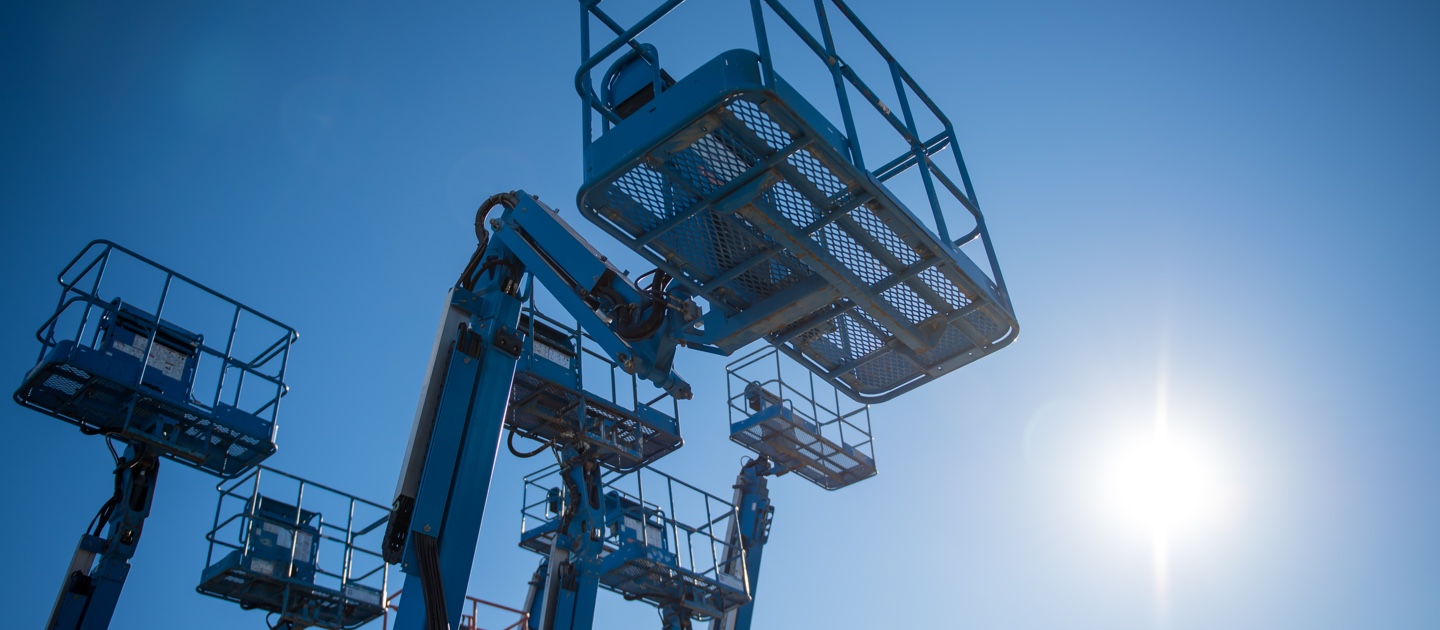A lift can transform the way you perform your work, but lift safety should always be paramount when operating equipment. Misuse or failure to adhere to safety rules can lead to serious injuries or even death. Below are six lift safety guidelines that will protect you and others from being hurt or killed.
Ensure Proper Lift Safety Training Is Available and Provided to Users
Good training sets the foundation for performing any activity safely. The use of a lift is no exception to the rule. Before you allow any personnel to utilize a lift, have them complete an appropriate training course by a qualified provider. Do not rely on good intentions or “hope” for the best; instead, make users accountable for completing training to ensure it is done.
Once training is completed, you should also provide ongoing education and learning opportunities for proper equipment use. Refresher training, even brief sessions, can be valuable in preventing accidents and will help ensure that operators are reminded of the need to use lifts safely.
Keep Lifts Well-Maintained
Another key to providing a safe working environment when it comes to lifts is adherence to maintenance standards. Lifts are complex devices that depend upon the interaction of hydraulic, electrical and mechanical components; failure in any of these components could cause an accident and subsequently an injury.
That is why you should follow all manufacturer guidelines for maintaining lifts. As such, always use the recommended fluids and other replaceable wear components, and don’t take shortcuts in an effort to save a few dollars. Inferior products and components can fail unexpectedly and may cost someone their life as a consequence.
Utilize All Existing Safety Devices
Lifts are equipped with a variety of safety features that help protect operators and those in the vicinity from harm. These lift safety features include alarms, harnesses, lighting and other devices that can guard and alert users. To provide full protection, these devices should never be overridden or disarmed.
Instead, learn how to use them in the context of performing everyday work, and ensure that workers understand their importance. If used properly, lift safety devices do not interfere with performing work, and they are vital for keeping people free from danger.
Maintain Awareness of Electrocution Hazards
A special hazard present in many lift working environments is the potential for electrocution. Lifts are often used in fairly close proximity to overhead transmission lines, and careless operation can lead to accidental contact with high voltage sources.
As such, maintaining a constant awareness of the operating environment is critical to keeping workers safe. In addition, standards should be implemented to allow for clearance zones between power sources and lifts. These standards are variable, depending on the specific threat involved, so be sure to understand what is applicable in your situation.
Be Cognizant of Possible Tip-Over Hazards
Lifts are flexible and versatile and are able to reach into remote spaces and other difficult locations for the performance of work. While this is a key advantage offered by their use, this flexibility can also lead to potential danger if tip-over hazards aren’t acknowledged.
That is why lift users must always be aware of possible tip-over situations and utilize equipment in such a way to avoid this possibility. For example, always ensure the lift is level and positioned on stable ground. In addition, do not rely solely on alarms to warn you in case of possible tip-overs dangers.
Avoid Operation in Adverse Weather Conditions
Work environments aren’t always comfortable, but you should always consider weather conditions when deciding whether or not to use a lift. High winds can lead to tipping, and that is why you need to know the limitations of your equipment and whether or not tip-overs are possible in given wind conditions.
In addition, be cautious when operating lifts in rainy conditions or whenever storms are present. The risk of a lightning strike is elevated during thunderstorms, and lifts are particularly vulnerable due to their higher profile.
If you have questions about lift use or rental questions, please contact Vandalia Rental for help. We are here to serve you and are able to provide the solutions you need for your job site.


